Star Charting Apps for iPhone and iPod Touch
| Uranus |
| Uranus |
Uranus is an electronic magnitude-10 star atlas, intended for observers who are already reasonably knowledgable about astronomy.
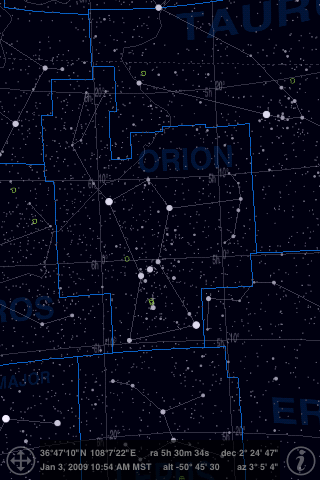 |
The screen of Uranus looks a lot like a printed star atlas. A single dimmer controls the constellation lines and boundaries, but the boundaries are always brighter than the stick-figure lines. |
||
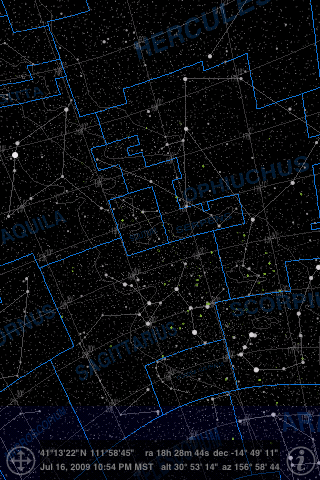 |
This app has the smallest maximum field, only 80°. The horizon is barely visible, indicated by the dark blue tint. The approximate boundary of the Milky Way is outlined as on many printed charts. |
||
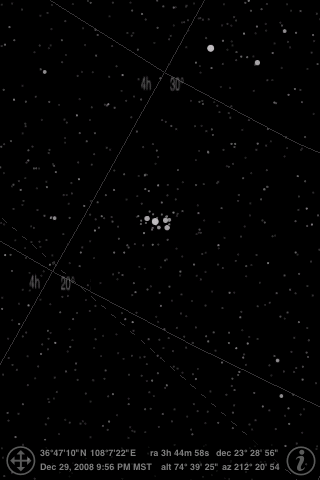 |
Although the number of stars is impressive, the limited zoom capability (18° minimum field) is frustrating. |
||
 |
Uranus will identify 15 times as many stars as any of the other apps, though the information displayed is minimal: name (or Bayer letter or Hipparcos number), coordinates, and magnitude. To identify an object you tap on it, and a popup appears at the bottom of the screen. With such a crowded chart and limited zooming, you normally can't tap accurately enough to hit the desired object the first time. The popup therefore provides a slider that moves the selection to other nearby objects, with a bright green arrow to indicate the current selection. Double-tap the popup to make it go away. |
||
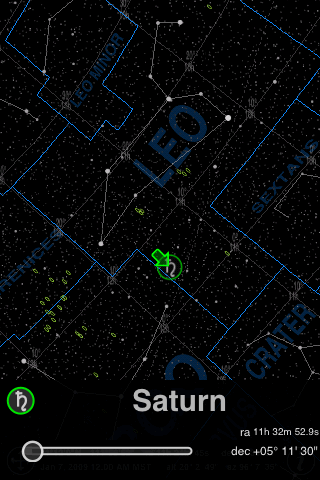 |
Uranus uses the traditional symbols to represent planets. When you tap on one it tells you only the right ascension and declination. |
||
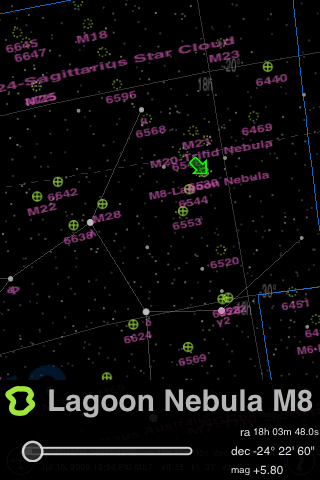 |
Uranus includes a great selection of 500 deep-sky objects, represented as traditional star atlas symbols. The names/numbers disappear when you zoom out, and can also be dimmed using the same dimmer control (hidden at the top of the screen) that dims the constellation lines and boundaries. Tapping on a deep-sky object shows the popup at the bottom of the screen, with the coordinates and magnitude. |
||
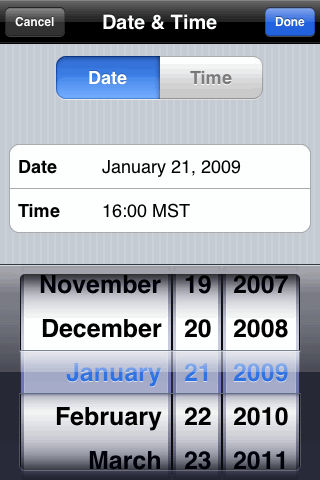 |
Changing the time in Uranus requires two taps to get you to the screen shown here. There's no way to animate the passage of time. |
||
|
Uranus has a single brightness control that dims the constellation lines, constellation boundaries, and all the object labels shown in pink in this image (which disappear anyway when you zoom out). To access this control you tap and hold at the top of the screen, then slide left or right along the grid thingy. Meanwhile, tapping the "i" button in the bottom-right corner of the Uranus screen takes you directly to the menu shown here, which doesn't include much more than you see. Obviously the emphasis here is on the deep-sky objects. The magnitude limit can be set as high as 22, but I'm not sure why; the database seems to be very incomplete above magnitude 10, and includes fewer than 500 stars above magnitude 14. |
Ease of Use Rating: 
This app is intended for fairly advanced users, but the slow graphics and awkwardly
designed interface make it even less appropriate for beginners than it could be.
Information Content Rating: 
No other app will identify so many stars, or display so many deep-sky
objects. But the information provided about the objects is pretty minimal.
Fun Factor Rating: 
This app is for serious astronomy enthusiasts, not those who want to sit back and
be entertained.
Creator's Web Site: www.deepprose.com
Last modified on 23 January 2009.